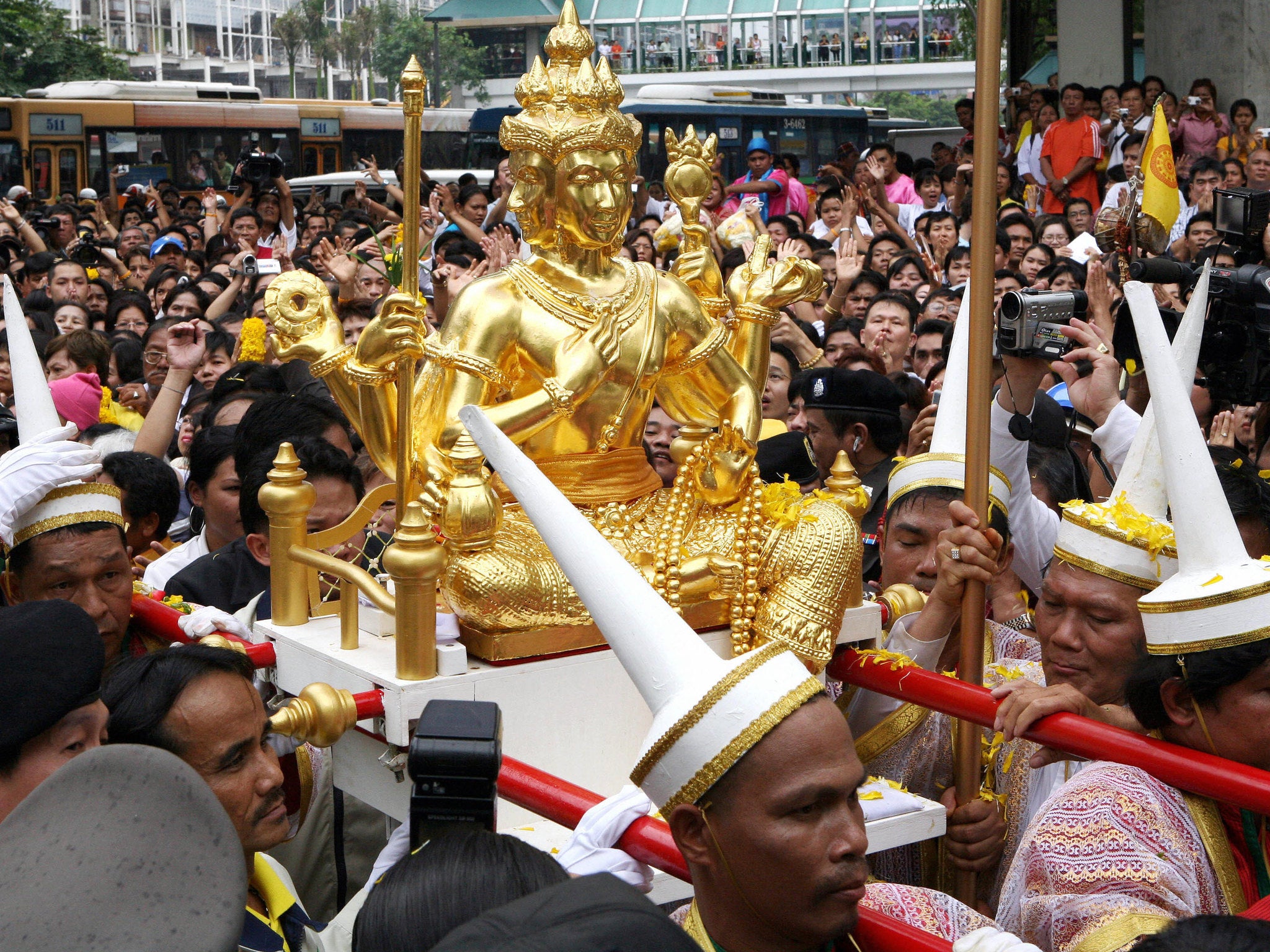Erawan Shrine: The Hindu shrine and tourist hotspot and in the heart of Bangkok
The shrine is a hugely popular destination for Buddhists and tourists in Thailand

Your support helps us to tell the story
From reproductive rights to climate change to Big Tech, The Independent is on the ground when the story is developing. Whether it's investigating the financials of Elon Musk's pro-Trump PAC or producing our latest documentary, 'The A Word', which shines a light on the American women fighting for reproductive rights, we know how important it is to parse out the facts from the messaging.
At such a critical moment in US history, we need reporters on the ground. Your donation allows us to keep sending journalists to speak to both sides of the story.
The Independent is trusted by Americans across the entire political spectrum. And unlike many other quality news outlets, we choose not to lock Americans out of our reporting and analysis with paywalls. We believe quality journalism should be available to everyone, paid for by those who can afford it.
Your support makes all the difference.A bomb blast in Thailand has detonated directly outside the Erawan Shrine in central Bangkok, an important location to the country's Buddhists.
The exact number of people killed in the explosion is still unknown, but the death toll currently stands at around 27.
The explosion is likely to send shockwaves across the country, partly due to its proximity to the famous shrine. Both the shrine and the area surrounding it are hugely significant in the religious, social and politicial life of the country.
Worshippers burn incense at the shrine
What is the Erawan Shrine?
The shrine is home to a statue of Phra Phrom, the Thai representation of Hindu creation God, Brahma.
Unusually, for an important shrine, it is relatively new. It was built in 1956, in an effort on the part of the government-owned Erawan Hotel to get rid of any bad karma they raised during the difficult construction of the hotel, which involved the loss of materials, spiralling costs and worker injuries.
The golden shrine sits incongruously between the hotel, now the Grand Hyatt Erawan Bangkok Hotel, and the Amarin Plaza shopping centre.
Since its creation it has become a hugely popular shrine, attracting large crowds of tourists and praying Buddhists every day.
A soldier surveys the damage following the explosion
Where is the shrine?
The shrine is a stone's throw from the Ratchprasong Junction - the centre of the wealthy Ratchprasong shopping district, but also a site of political importance following a series of anti-government protests there in 2010.
Members of the National United Front of Democracy Against Dictatorship (UDD), also known as the Red Shirts, occupied the area around the junction during the protests, calling for democratic elections after Prime Minister Thaksin Shinawatra was deposed in a military coup in 2006.
The tent city was eventually cleared by the military, beginning a violent crackdown against the movement which resulted in the deaths of around 90 people. During the chaos that ensued, buildings in the area were burned and damaged severely.
In the aftermath of the explosion, the shrine can be seen in the background
Have there been problems there before?
A major incident occurred at the shrine in 2006, when Thanakorn Pakdeepol, a mentally-ill 27-year-old man, attacked the shrine with a hammer, smashing the hollow figure to pieces.
He was immediately seized by bystanders, and was beaten to death on the spot. Two street sweepers were arrested and charged with his death.
Thailand has been hit by major explosions before - Chiang Mai, in the north of the country, was hit by a series of blasts last year. In 2012, there was another bombing in Bangkok, which injured five people and was blamed on Iranian assassins by the Thai authorities.
In February this year, a small bomb exploded at the Siam Paragon shopping centre. No one was injured in this incident, and the bomb was believed to be homemade.
Join our commenting forum
Join thought-provoking conversations, follow other Independent readers and see their replies
Comments